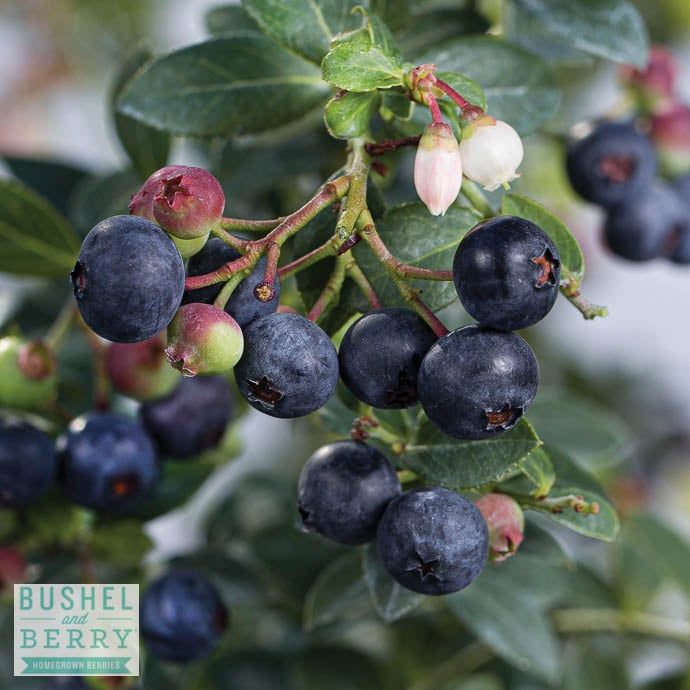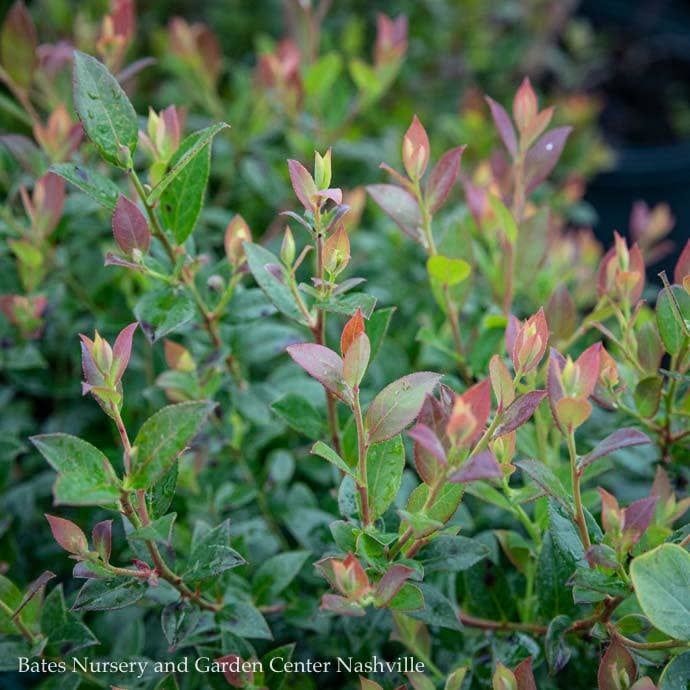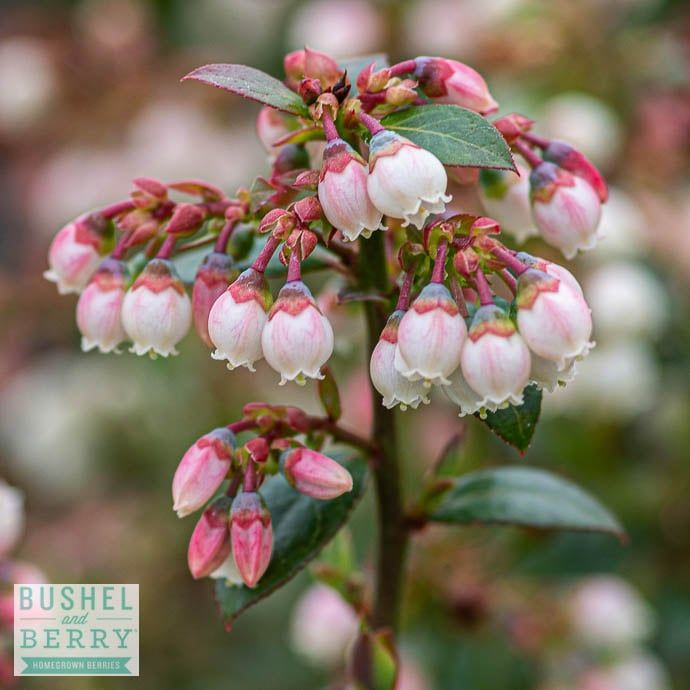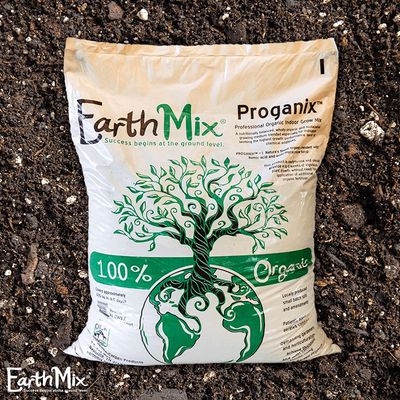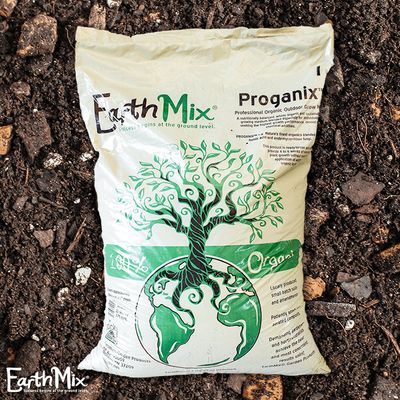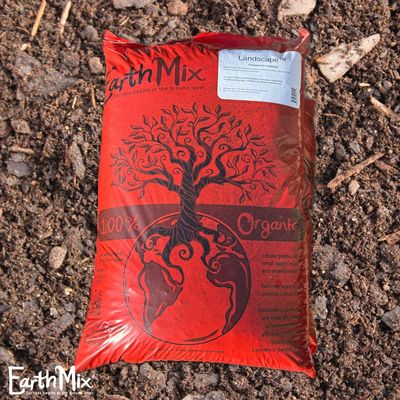Edible #2 Vaccinium myr x cory Bushel and Berry 'Blueberry Buckle'/ Blueberry
Edible #2 Vaccinium myr x cory Bushel and Berry 'Blueberry Buckle'/ Blueberry
SCIENTIFIC NAME: Vaccinium hybrid 'Corablue' PP 22521
COMMON NAME: Bushel and Berry Blueberry Buckle Blueberry, Corablue Blueberry, Southern Highbush Blueberry
GARDEN SIZE: 2-3 feet tall x 2-3 feet wide
GROWTH RATE: Reaches maturity in 6-8 years
USDA ZONE: 6-10
CHILL HOURS: 350
EXPOSURE: Full Sun
WATER & SOIL: Acidic, well-drained soil high in organic matter
HABIT (FORM): Multi-stemmed woody shrub with a compact upright form
FOLIAGE: Deciduous with unusually small and glossy blue-green leaves that turn red-orange in autumn
FLOWERS: Clusters of small, bell-shaped, pink and white flowers
BLOOM TIME: Late winter to early spring
HARVEST TIME: Early summer
POLLENIZATION: This hybrid highbush blueberry is self-fertile and produces some fruit in isolation, but it will produce a better crop with a compatible partner nearby. Plant near at least one other highbush blueberry of a different variety that blooms around the same time to encourage cross-pollenization.
POLLENIZATION PARTNERS: Recommended partners for Blueberry Buckle include other early- to mid-blooming southern highbush blueberries like Bushel and Berry's 'Peach Sorbet' and 'Sapphire Cascade'.
FRUIT: Small, sweet, dark blue berries
CARE: When planting, condition the soil in an area twice the diameter of the root ball with peat moss or a soil conditioner like our Earthmix Landscape. Mix soil conditioner with existing soil in a 50/50 ratio.
Mulch with 2-6 inches of straw, wood chips, or other organic matter to help regulate moisture. Leave a gap of a few inches around the trunks to prevent damage to the stems from staying wet.
Blueberry bushes need about an inch of water every 7-10 days, though young bushes need a little more during their first growing season while they establish roots. If not enough rain has fallen, give a deep soak to the soil around the base of the plant once or twice per week. A good rule of thumb is 1 gallon of water per square foot of surface area under the canopy.
Fertilize each spring and fall with Holly-tone or another fertilizer made for acid-loving plants.
Prune in late winter to early spring while the plant is dormant. Remove weak canes and low-growing shoots that will be shaded by other limbs or touch the ground. If desired, cut taller canes down to within arm's reach to make it easier to harvest berries.
When your blueberry bush is about five years old, you may notice older canes becoming less productive. At this stage, begin cutting back 20% of the thick, gray, older branches to ground level each year. This will allow the canes to completely refresh themselves in a five year cycle.
PET SAFETY: May cause gastrointestinal issues in cats and dogs if consumed in large amounts, but not commonly eaten by pets. Always research further if you have concerns, as reactions can occur with anything. Also, remember to check the safety of any fertilizers or pesticides applied to your plants.
USES: Edible berries, container planting, borders, fall color
HISTORY: The original Blueberry Buckle seedling was found by David Dickerson in Hawthorne, Florida among plants of two different blueberry species: Vaccinium myrsinites (Shiny Blueberry) and Vaccinium corymbosum (Northern Highbush Blueberry). Because the seedling showed traits of both species, it's assumed to be a cross of the two, but this is not known for certain. The new cultivar was patented in 2012.
